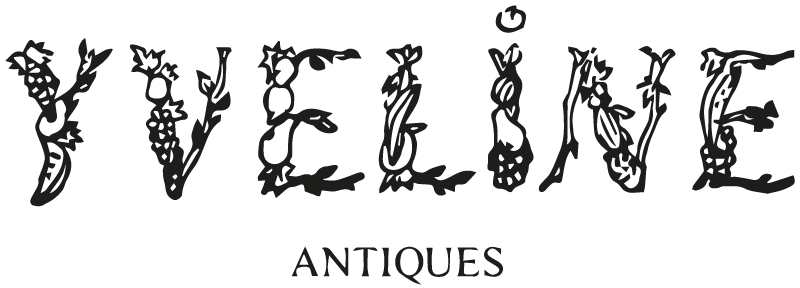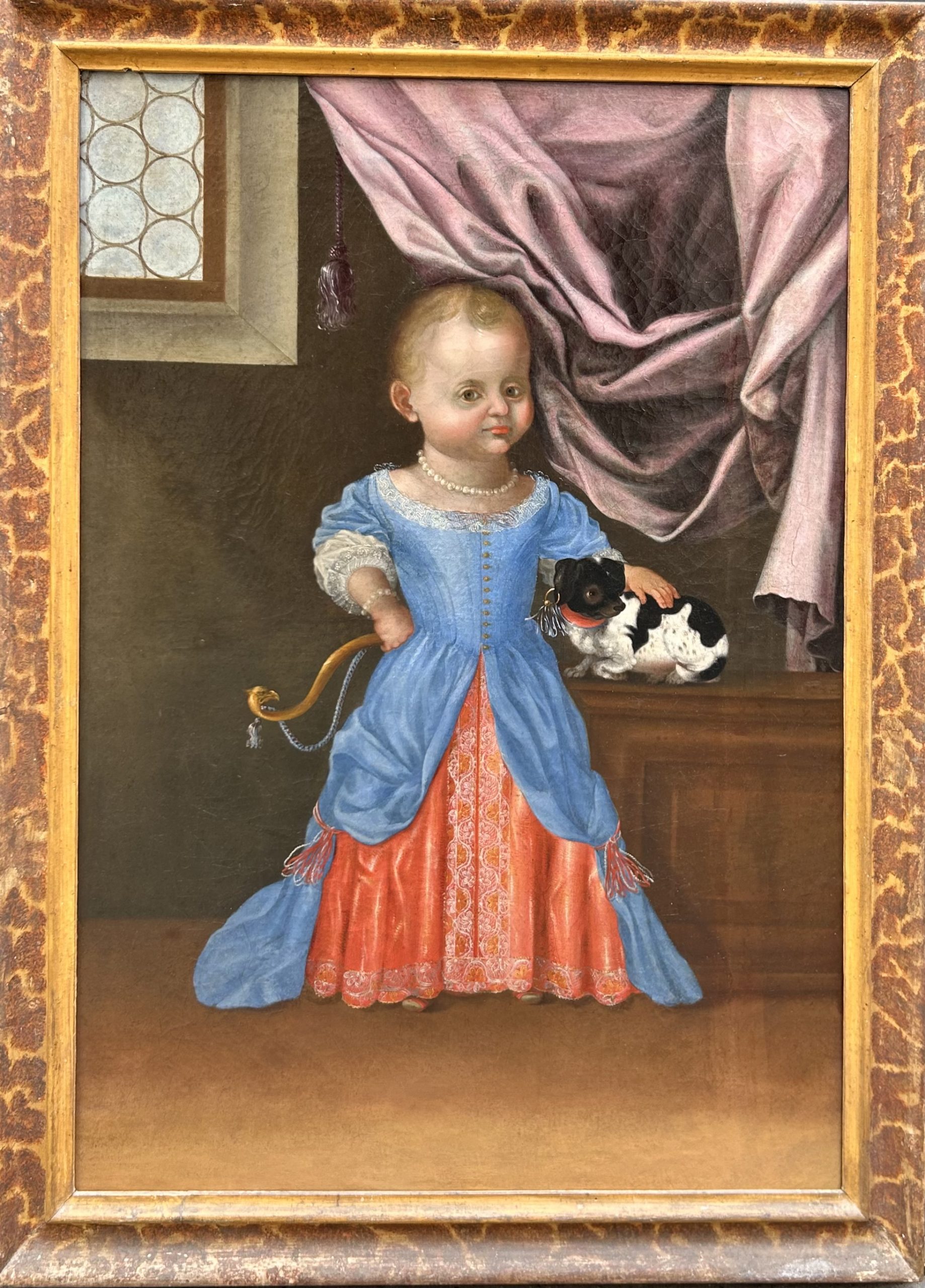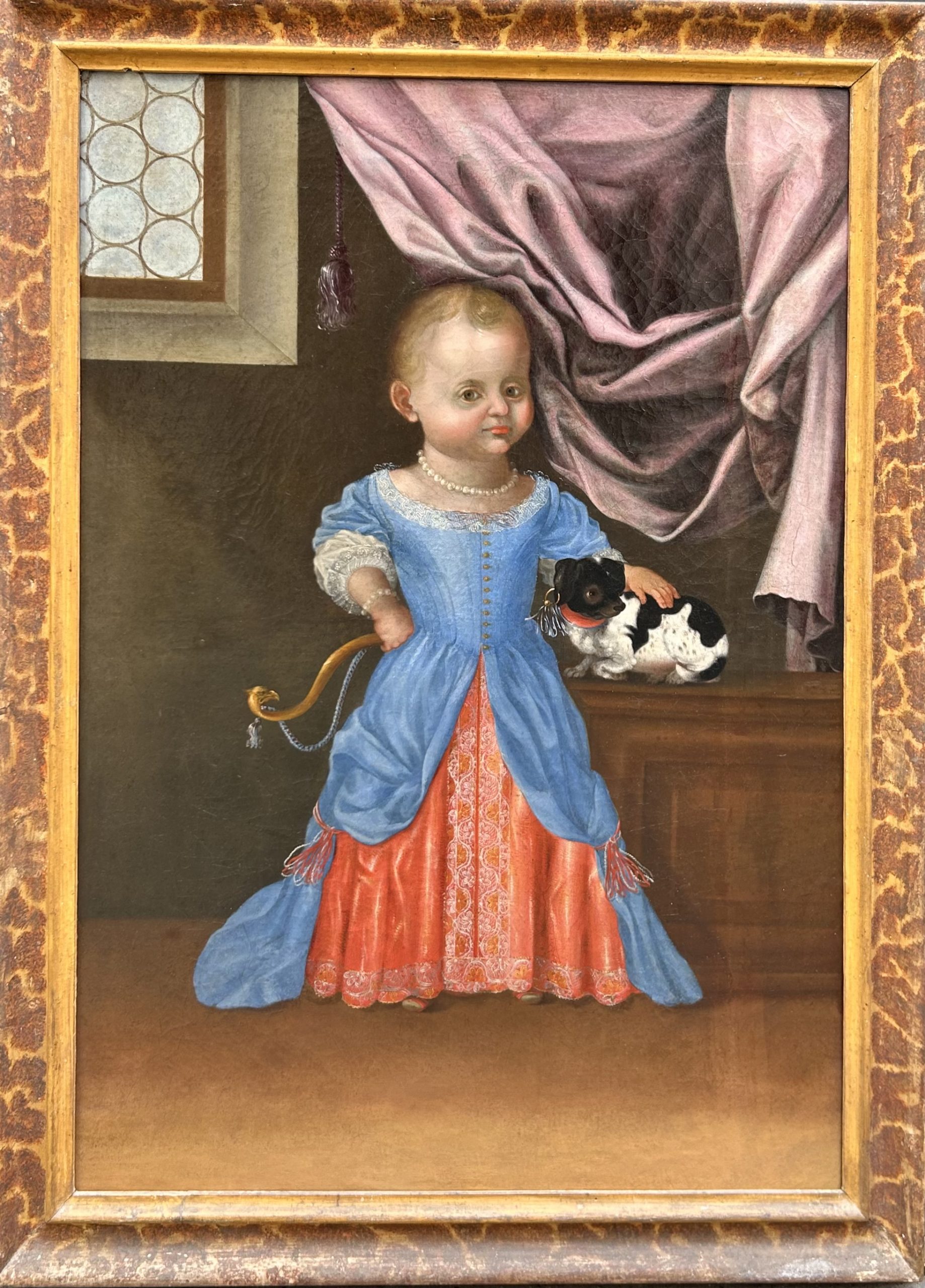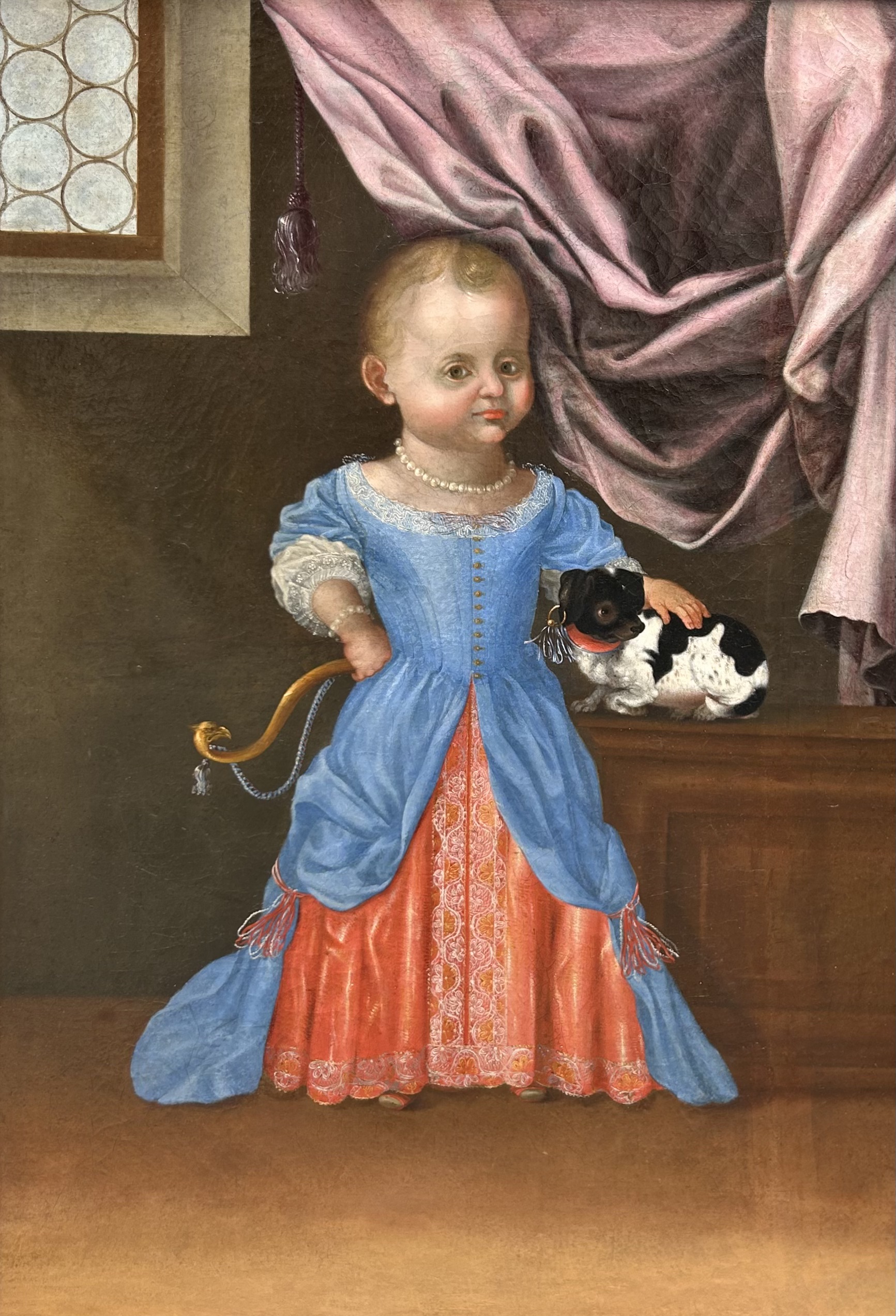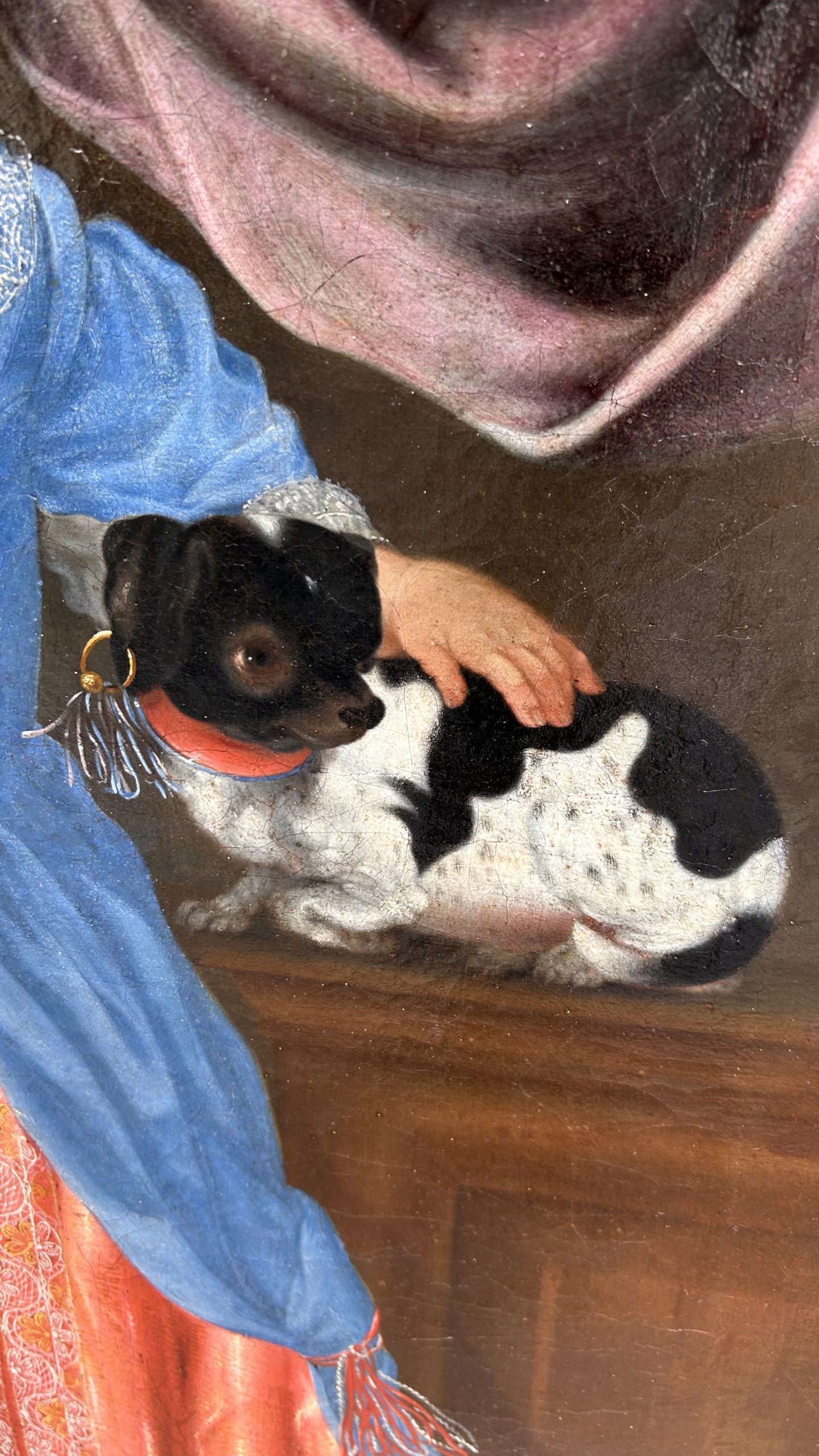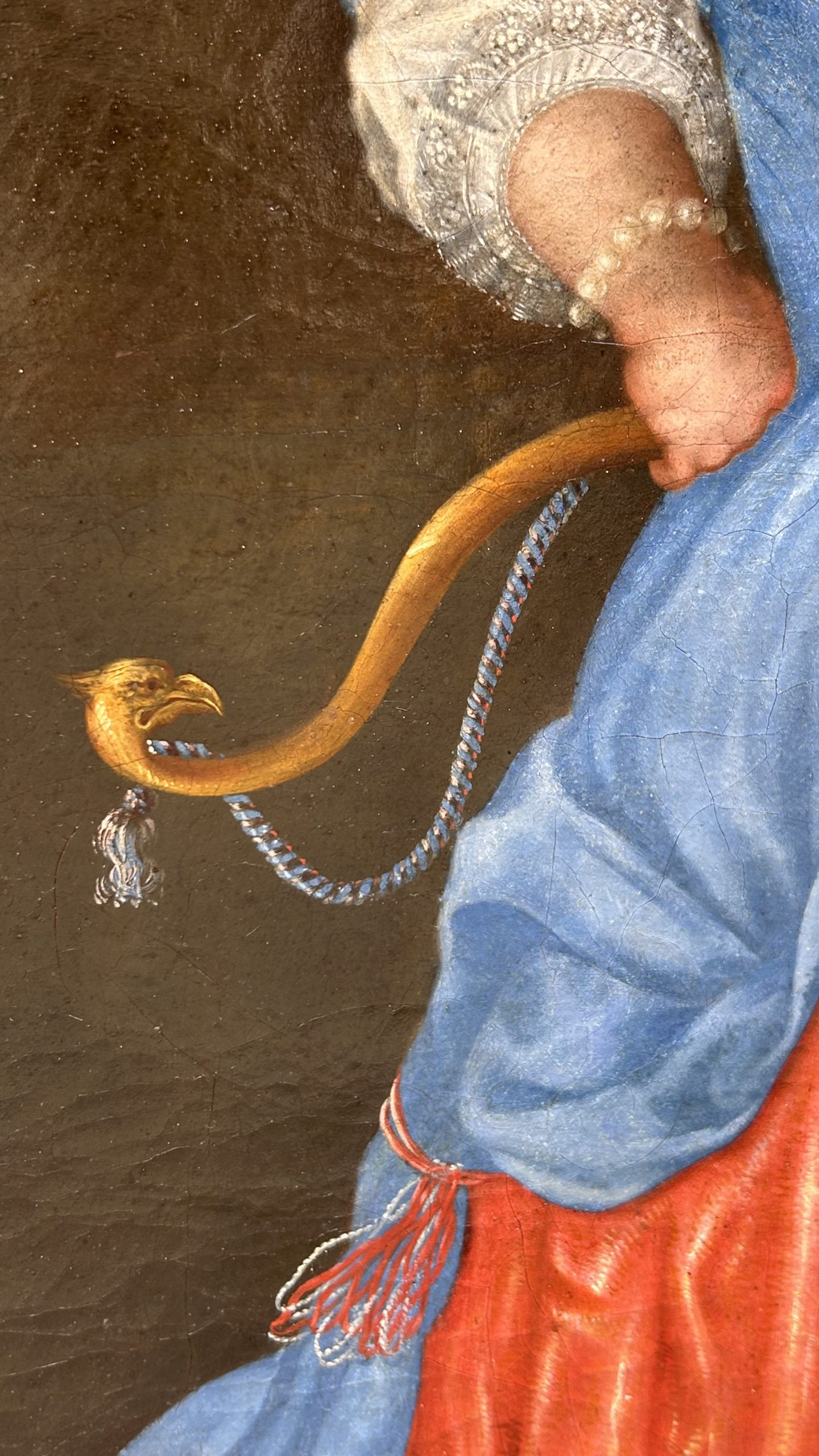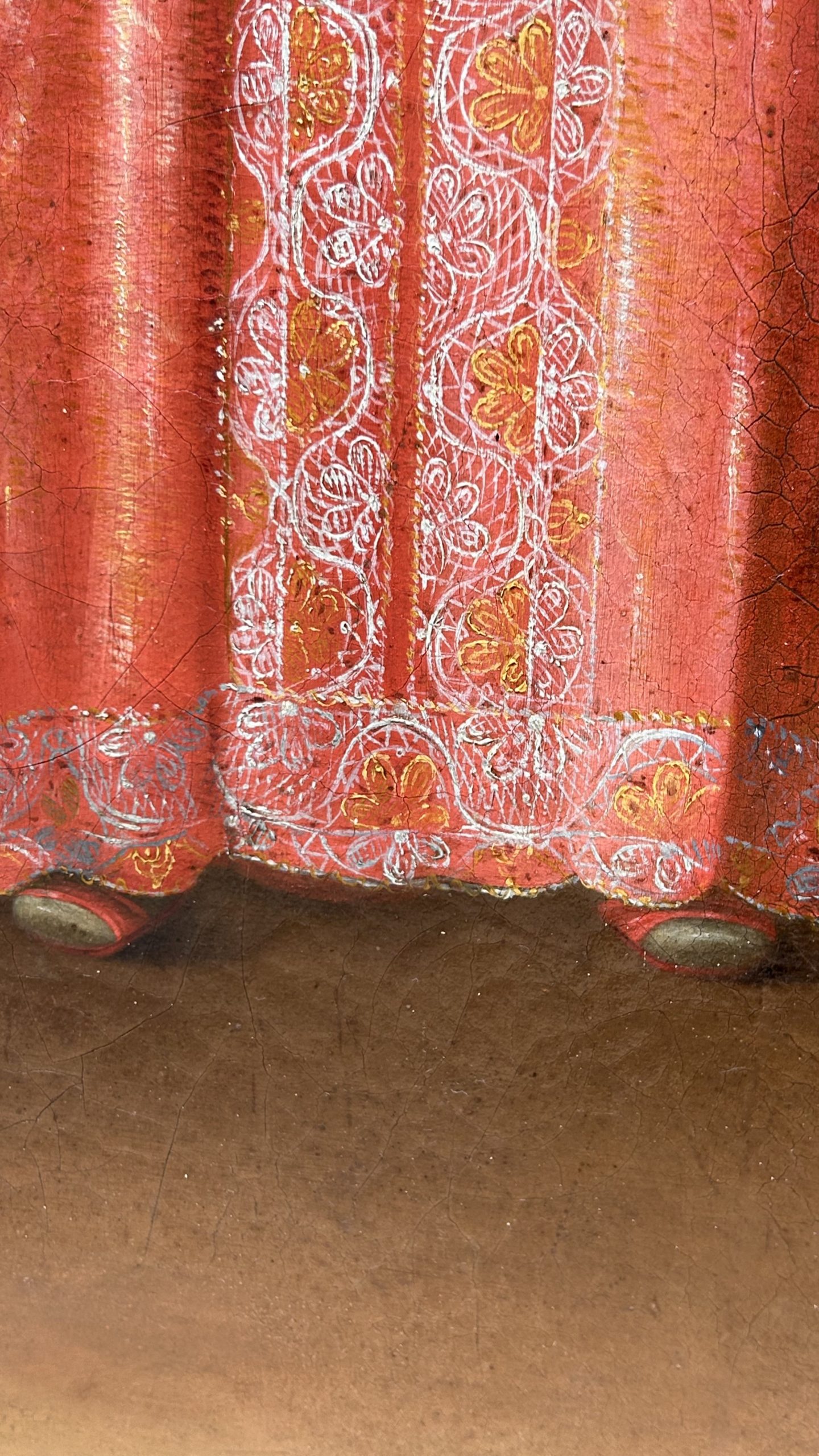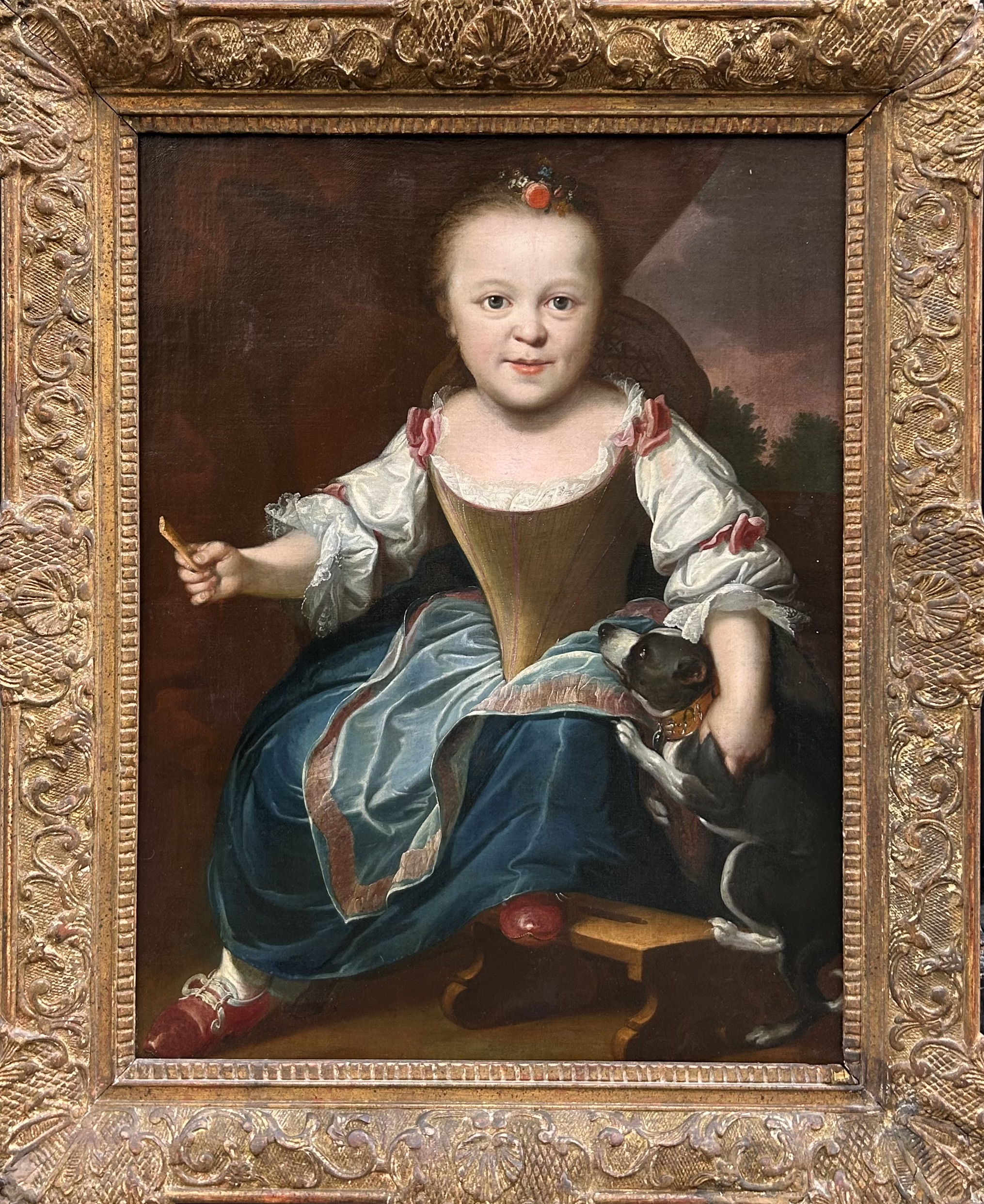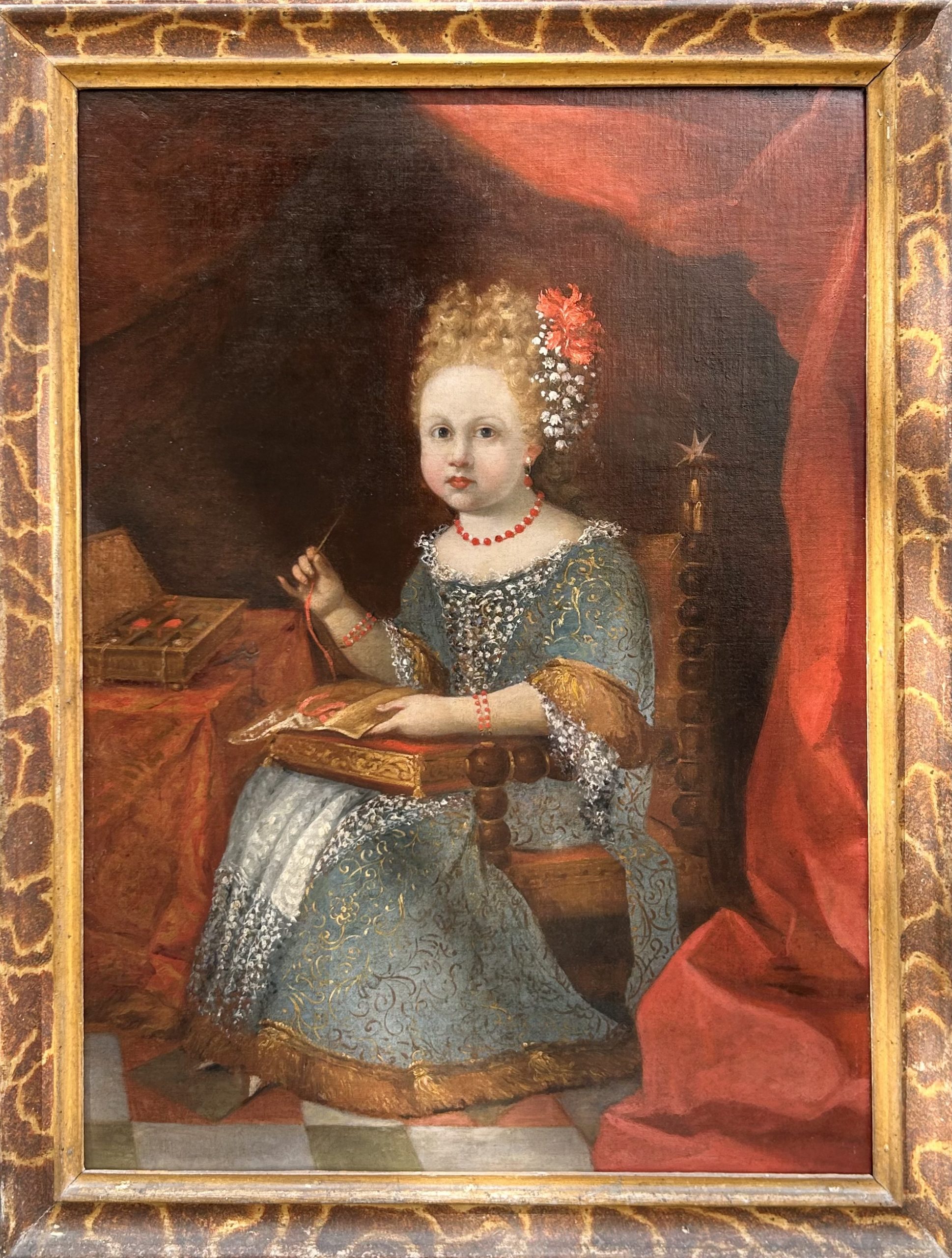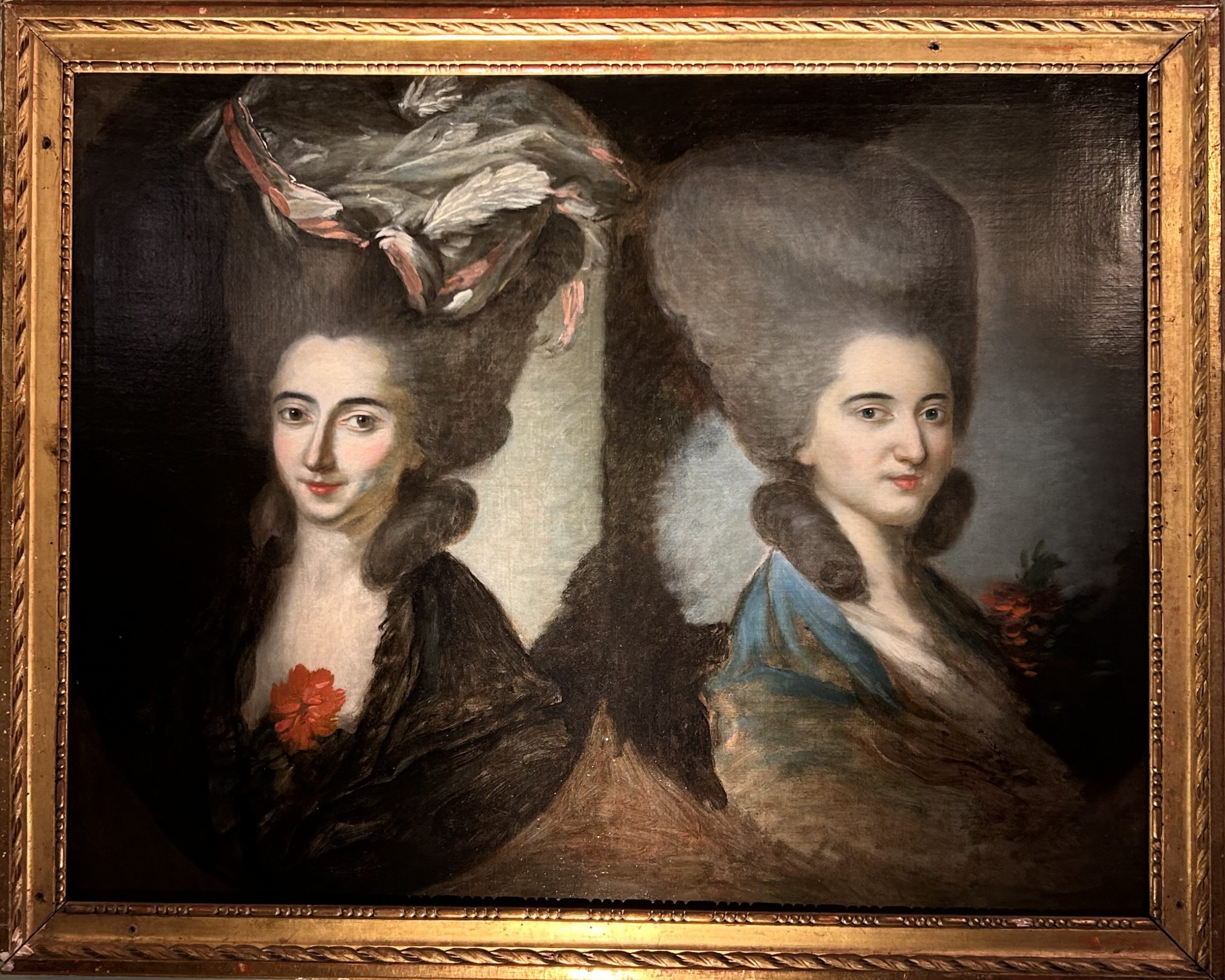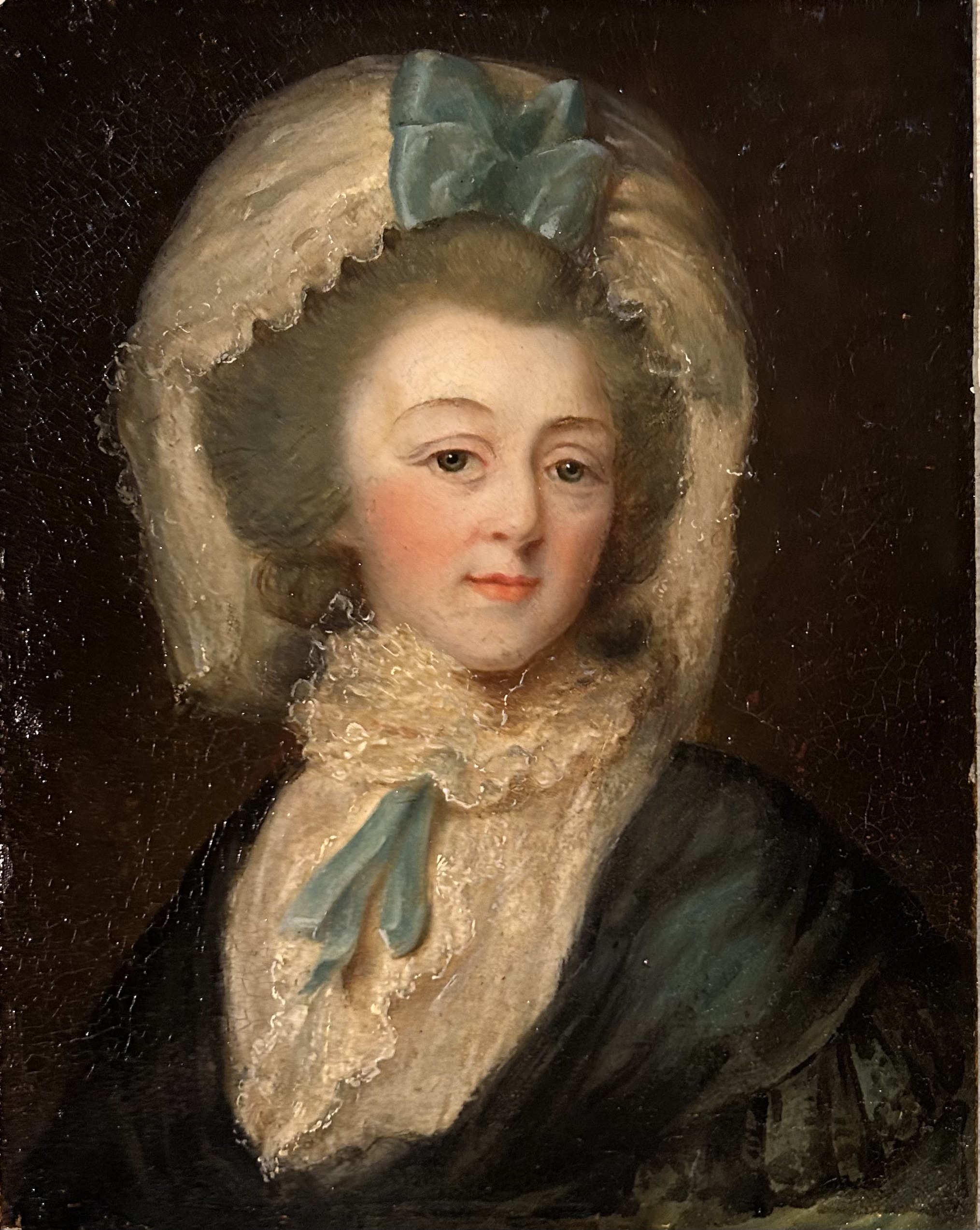Oil on canvas depicting a princely child with his dog, the boy dressed in a robe and holding a bow (symbol of monarchical power) with a handle in the shape of an eagle’s head, the dog wearing an earring in the shape of a pompom ring.
In traditional Europe, infants wore swimsuits until about eight months of age, then adopted gender-neutral dresses until the age of seven.
In Antiquity, the bow was considered a powerful weapon, which kings used with arrows to strengthen their power over their subjects and enemies. In Rome, from the beginning of the Empire, in the hands of emperors and gods, the bow became one of the symbols of Roman imperial power.
Hunting, a royal activity par excellence, has been practiced by kings for millennia, especially in the East. In Rome, as a leisure activity for sovereigns, it reached its peak under the Antonines in the 2nd century. This renewed interest corresponds to the spread to Rome of political ideas and practices from the East.
The first traces of the existence of earrings date back to Antiquity. The Middle Ages were marked by the complete disappearance of earrings in Europe. Since the fall of the Roman Empire, these jewels only appeared in the Byzantine Empire. Earrings reappeared in Italy in the 16th century, primarily in Italy and then in Spain.
18th century
Italy
Height with frame: 93 cm
Width with frame: 127 cm
